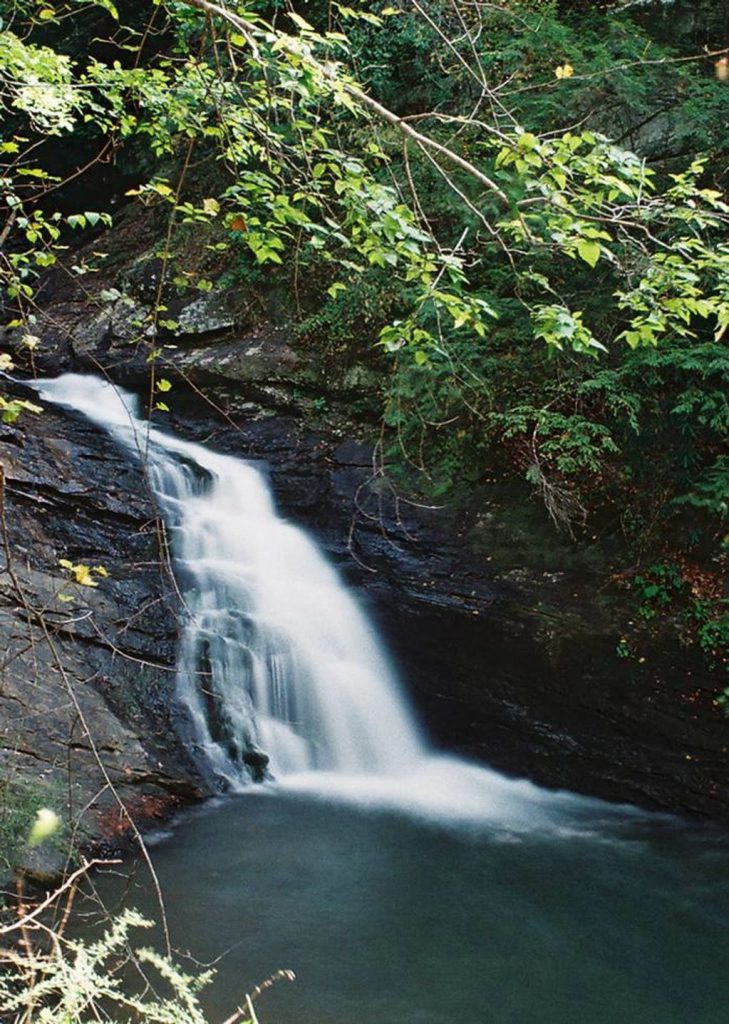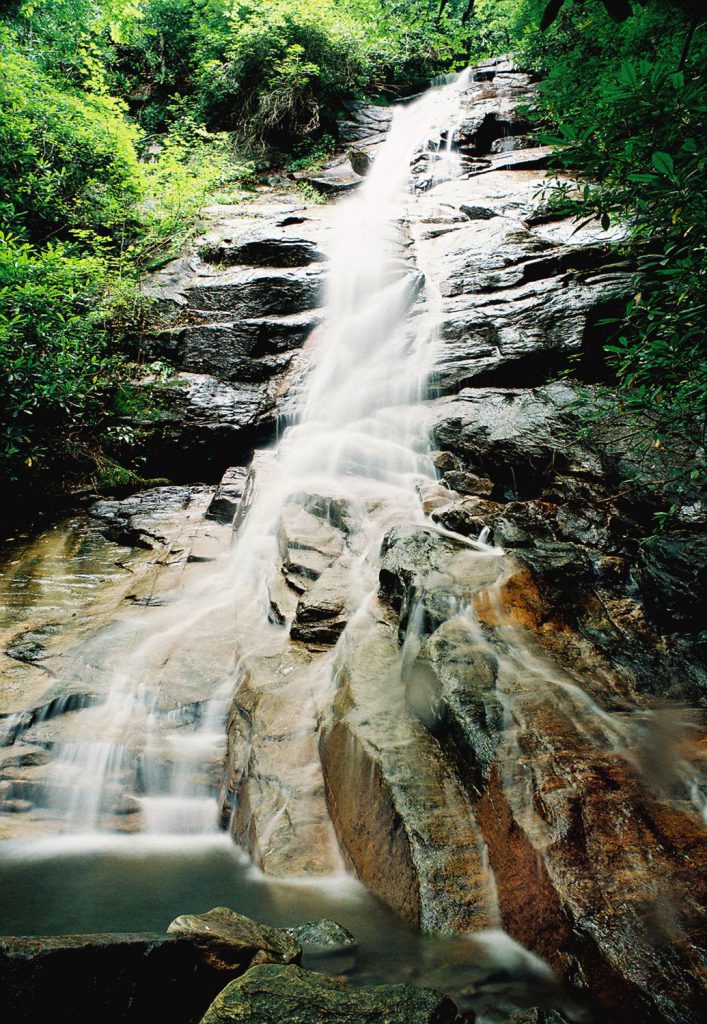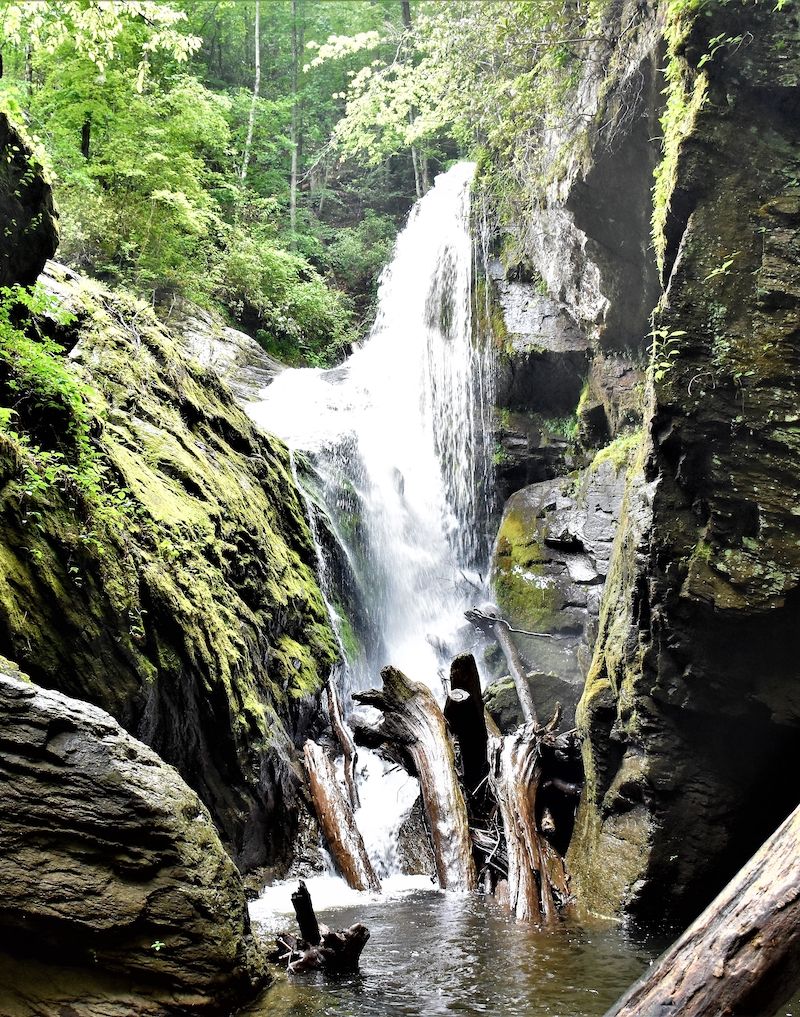WELCOME TO
WATERFALLS
OF UPSTATE SOUTH CAROLINA
PURPOSE OF THIS WEBSITE
 This website encourages families, novice hikers, and weekend walkers to visit Upstate South Carolina’s easy-to-reach waterfalls. It also serves to make known many attractive waterfalls within reach of residents of the Upstate. Most of these waterfalls are within the ability of the average hiker to reach on a day hike.
This website encourages families, novice hikers, and weekend walkers to visit Upstate South Carolina’s easy-to-reach waterfalls. It also serves to make known many attractive waterfalls within reach of residents of the Upstate. Most of these waterfalls are within the ability of the average hiker to reach on a day hike.
Many waterfalls are accessible by families with young children and mature adults and are encouraged to take advantage of great family times. Some information presented on this website will help the more advanced hiker and waterfall enthusiast find some of the lesser-known and more hard-to-find waterfalls.
Another purpose is to present a glimpse of God’s creation that He permits us to enjoy. As displayed on this website, the meandering trails and streams abound with beautiful and unusual wildflowers present throughout the year.
Be prepared with a camera to capture the waterfalls, wildflowers, and scenic beauty of our Blue Ridge Mountains.
Some general information and photos of waterfalls and wildflowers are listed. However, the waterfall location, specific driving directions, and trail directions are complete in the book Waterfall Hikes of Upstate South Carolina, available at many State Park visitors’ centers, local bookstores, outdoor outfitters, and online.
Falling Waters
 Few sights captivate the eye like a waterfall. An irresistible magic draws us to gaze in wonder at these natural fountains. Waterfalls are among nature’s most sought-after spectacles, attested to by the fact that many a mountain trail ends at the foot of a cascading stream. Their beauty and drama inspire poems of praise and tales of tragedy, and the danger posed by their perilous heights seems only to add to their allure.
Few sights captivate the eye like a waterfall. An irresistible magic draws us to gaze in wonder at these natural fountains. Waterfalls are among nature’s most sought-after spectacles, attested to by the fact that many a mountain trail ends at the foot of a cascading stream. Their beauty and drama inspire poems of praise and tales of tragedy, and the danger posed by their perilous heights seems only to add to their allure.
Neither skillfully made photographs nor carefully chosen words can fully convey the beauty and drama of a waterfall. Scenes of such grandeur defy expression. Perhaps this is because a waterfall is as much an event as a place—the motion and the sound of falling water, the thunderous roar and drenching spray, the smell of fresh water on laurel-scented air—these delights must be experienced firsthand.
For untold ages, these places of wild splendor have beckoned from the ancient heights. Thanks to people who care, they beckon still.
–Glen Oeland
Feature Editor at National Geographic Magazine
CONTEMPLATING NATURE
 Many frequented trails in the foothills of the Blue Ridge Mountains in Upstate South Carolina transport a hiker to picturesque waterfalls. The trails’ elevations rise and fall as they meander over the ridges, through the valleys, and over small streams of cool, rushing water. Most trails are resplendent with a population of spring ephemeral wildflowers: trilliums, bloodroot, asters, mayapples, and many other varieties tease the senses with vivid colors and fragrances.
Many frequented trails in the foothills of the Blue Ridge Mountains in Upstate South Carolina transport a hiker to picturesque waterfalls. The trails’ elevations rise and fall as they meander over the ridges, through the valleys, and over small streams of cool, rushing water. Most trails are resplendent with a population of spring ephemeral wildflowers: trilliums, bloodroot, asters, mayapples, and many other varieties tease the senses with vivid colors and fragrances.
At the end of these trails, a magnificent visual reward awaits the hiker: 100+-foot-high waterfalls. A pause at a waterfall base allows a weary hiker to rest and behold the biome tranquility. Fluffy white clouds float softly through the Carolina blue sky above the waterfalls and the tall hardwoods and conifers. The only sound to arouse the senses is the roaring sound of water cascading down the side of the mountain and swiftly flowing between ancient boulders in a creek of undetermined age.
According to research by various psychologists, people who take time to contemplate nature experience higher levels of happiness, lower levels of anxiety, and a greater desire to care for the earth.
However, walking through a small part of nature is not enough. One must watch the clouds, smell the flowers, and listen to the sounds. The vital agent is not being in nature but letting nature touch the mind, the heart, and the inner spirit.